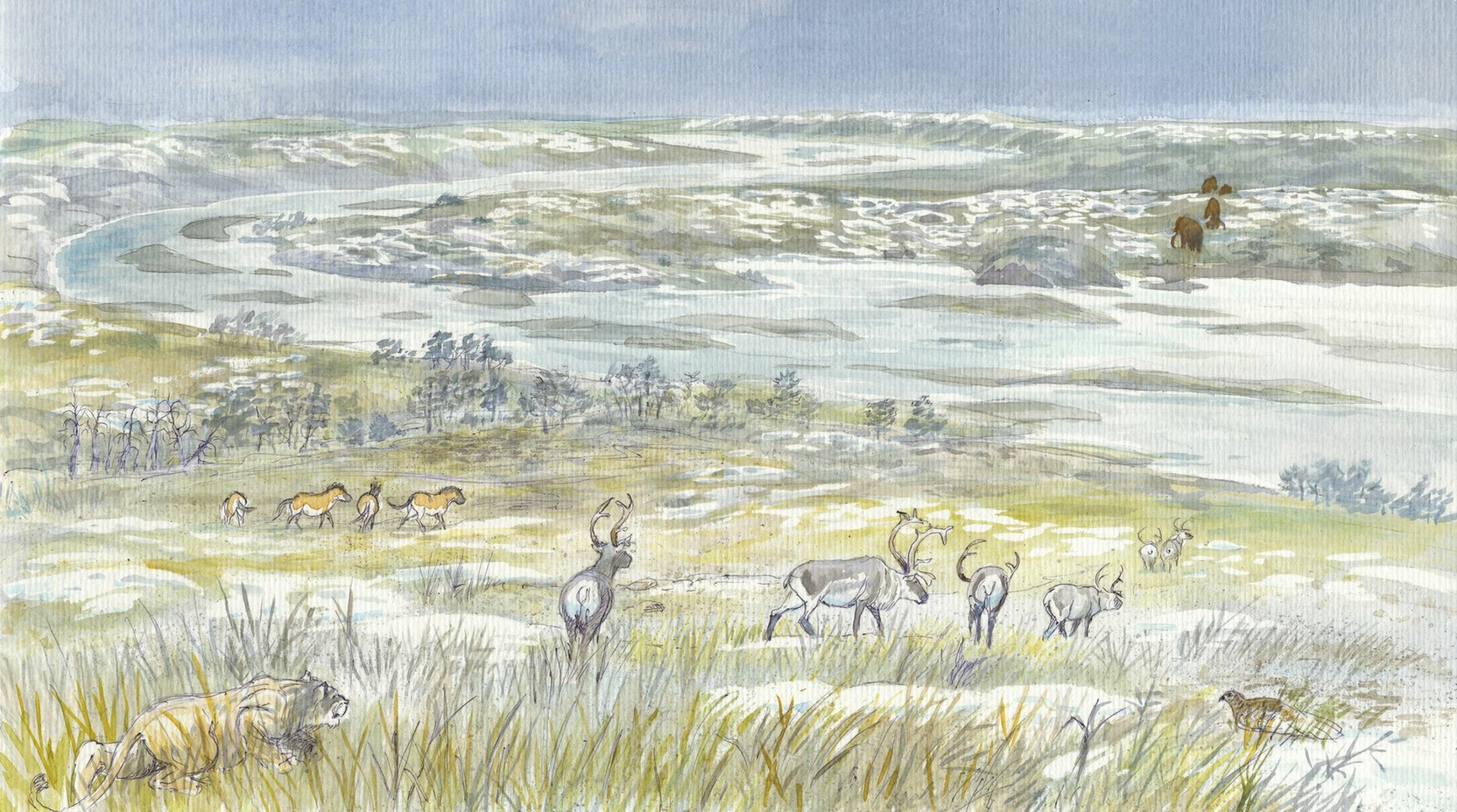
- Home
- Explore the site
- Historical and environmental context
- The Magdalenian in Europe
The term Magdalenian refers to a combination of technological and artistic choices that appeared in south-west Europe during the late Upper Palaeolithic, in around 19,000 BCE. This culture was spread until around 12,500 BCE by diverse peoples as far apart as Poland and England (then joined by dry land), known collectively for convenience as the Magdalenians.
Hybrid and fluid cultural identities
There never occurred in the same place all the ingredients that made up the general characteristics specific to the multimillennial and multiregional Magdalenian. For example, in the Paris region, there are none of the barbed points made from reindeer antler that were typical in other regions. In addition, the duration of this cultural current varied, from approximately 7,000 years where it first began, to much less in the north of Europe, where it arrived later. Hence, the generic term Magdalenian covers multiple hybrid and fluid cultural identities. What we describe at Étiolles applies to those who came there during the Late Magdalenian and who shared several but not all customs with those who lived nearby or as nomads in other regions of Europe.
Elsewhere at the same time
Further away there were much more striking differences in cultural traditions. During the same period, hunter-gatherers in the Near East were beginning to settle. This was an entirely different trajectory that led to the first agricultural practices, well before they arrived in the Paris Basin in around 5,000 BCE.
Partners and authors
Associated media
Open Media Library

Object sculpted from reindeer antler, from the Montastruc rock shelter in Bruniquel (Tarn-et-Garonne)

Reindeer engraved on a limestone block, from Limeuil (Dordogne)

Female figures engraved on a stone block from the Roche de Birol cave in Lalinde (Dordogne)

Barbed <em>sagaie</em> points carved from deer antler, from Madeleine, Tursac (Dordogne)

